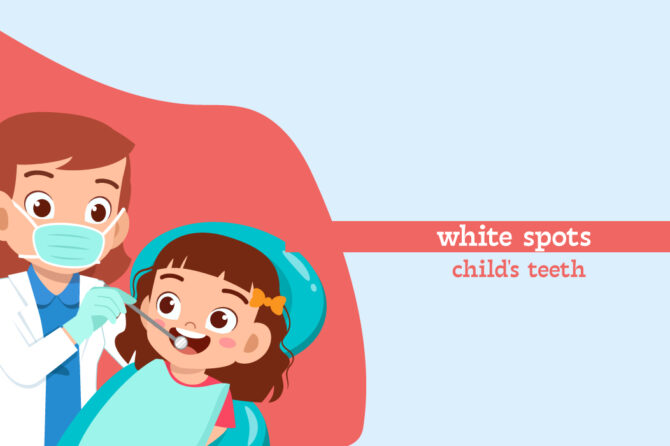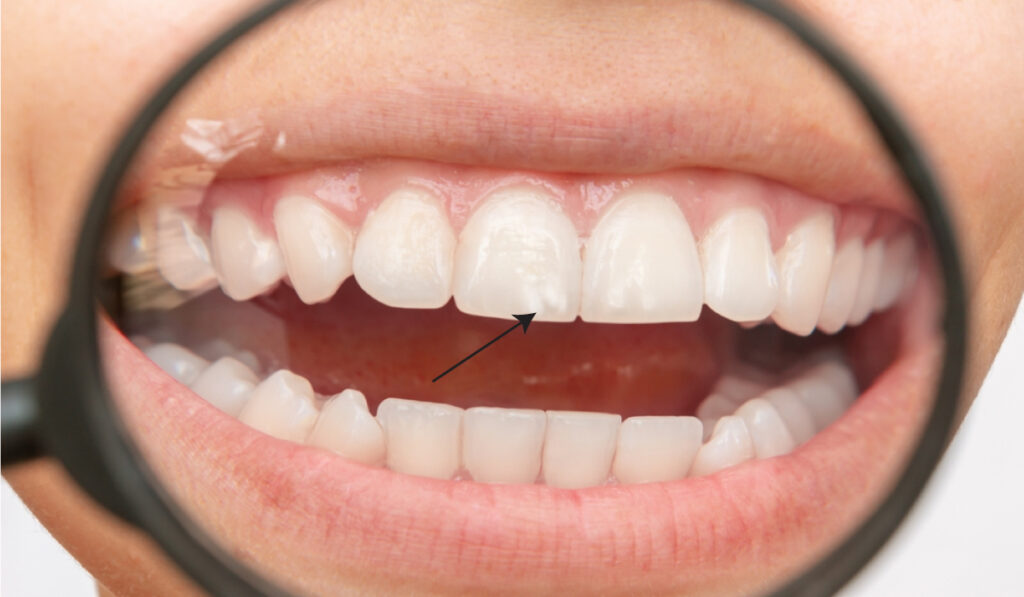
When to see a dentist about white spots on your child’s teeth
White spots on children’s teeth can be a common concern for parents, and it’s essential to understand the underlying causes. While some white spots may be harmless, others can indicate dental issues that require treatment. In this blog, we will discuss the various reasons why children may develop white spots on their teeth, including poor oral hygiene, excessive fluoride intake, and enamel hypoplasia. We will also explore the available treatment options and provide tips for preventing white spots on your child’s teeth. With this information, you can take the necessary steps to ensure your child maintains optimal oral health and a bright, healthy smile.
White spots on teeth
White spots on teeth can be a common dental issue that affects both children and adults. The white spots may be a sign of dental decay, enamel hypoplasia, or excessive fluoride intake. Poor oral hygiene, certain medications, and a diet high in sugar and acidic foods can also contribute to the development of white spots on teeth. Depending on the underlying cause, treatment options for white spots on teeth may include dental bonding, tooth whitening, or dental veneers. Maintaining good oral hygiene practices, such as regular brushing and flossing, and visiting the dentist for routine check-ups and cleanings, can help prevent the development of white spots on teeth. If you notice white spots on your or your child’s teeth, consult with a dentist to determine the underlying cause and the most appropriate treatment plan.
causes of white spots on baby teeth
- Fluorosis: Fluorosis occurs when a child ingests too much fluoride while their teeth are still developing. This can cause white or brown spots to appear on the teeth.
- Poor dental hygiene: Inadequate brushing and flossing can lead to the buildup of plaque and tartar, which can cause white spots on the teeth.
- Enamel hypoplasia: This is a condition where the enamel on the teeth doesn’t develop properly, which can result in white or yellow spots on the teeth.
- Early childhood caries: Also known as baby bottle tooth decay, this is a form of tooth decay that can cause white spots on the teeth in its early stages.
- Calcium deficiency: A lack of calcium in a child’s diet can lead to the development of white spots on the teeth.
- Genetic factors: In some cases, white spots on baby teeth can be a result of genetics.
- Trauma: Trauma to the teeth can cause white spots to appear on the affected area.
- Medications: Certain medications, such as antibiotics or antihistamines, can cause white spots to develop on the teeth.
White spots on teeth treatment
The treatment for white spots on teeth depends on the underlying cause of the condition. Here are some common treatment options:
- Tooth whitening: This is a popular option for treating white spots caused by mild fluorosis or surface stains. It involves using a bleaching agent to whiten the teeth and reduce the appearance of white spots.
- Dental veneers: These are thin shells made of porcelain or composite resin that are bonded to the front of the affected teeth to improve their appearance.
- Micro abrasion: This involves removing a small amount of the enamel surface of the tooth to reduce the appearance of white spots.
- Fluoride treatment: For white spots caused by mild fluorosis, a fluoride treatment may be recommended to help remineralizer the enamel and reduce the appearance of white spots.
The appropriate treatment option for white spots on teeth will depend on the severity of the condition and the underlying cause. Consult with a dentist to determine the best treatment plan for you or your child.
Tooth decay white spots on teeth
White spots on teeth can be an early sign of tooth decay, which is a common dental issue caused by bacteria in the mouth that produce acid that attacks the enamel. When tooth decay is in its early stages, it can cause white spots to appear on the tooth’s surface. If left untreated, the decay can progress and lead to cavities, which can cause pain, infection, and tooth loss. Treatment for white spots caused by tooth decay may include:
- Fluoride treatment: This involves applying fluoride to the affected teeth to remineralizer the enamel and prevent further decay.
- Dental bonding: This involves applying a tooth-colored composite resin to the affected teeth to improve their appearance and prevent further decay.
- Dental sealants: These are protective coatings that are applied to the chewing surfaces of the back teeth to prevent decay.
- In severe cases, a filling or crown may be necessary to restore the tooth’s structure.
Prevention is the best defense against tooth decay and white spots on teeth. Practicing good oral hygiene habits such as brushing and flossing regularly, avoiding sugary and acidic foods and drinks, and visiting the dentist regularly for check-ups and cleanings can help prevent tooth decay and maintain good oral health.
Conclusion
In conclusion, white spots on teeth can be a common dental issue that affects children and adults. They may be a sign of dental decay, enamel hypoplasia, or excessive fluoride intake. Poor oral hygiene practices, certain medications, and a diet high in sugar and acidic foods can also contribute to the development of white spots on teeth. If you notice white spots on your child’s teeth, it’s important to consult with a pediatric dentist who can determine the underlying cause and provide the most appropriate treatment plan. At Kids Dental Studio, our team of experienced pediatric dentists provide personalized and compassionate care to children of all ages. We offer a range of preventive and restorative dental services to help children maintain good oral health and achieve healthy, beautiful smiles. Contact us today to schedule an appointment for your child.
Leave a reply
